The modern market requires non-standard strategic decisions, which should be made on the basis of analytical information. To put a competitive price tag, to give a unique promotion for the product, to offer an exclusive gift set - "calculated individuality - synonymous with your success".
Competitive price - what is it? Tricks of setting prices
Competitive price is the price that is set for the product as a result of monitoring the market and nearest competitors. It is the minimum price tag for a product that will maximize profits.
Competitive pricing by the example of internet-shop of perfumery and cosmetics
Purpose of connection of the service of competitor price monitoring:
- Competitive pricing as a result of increased sales.
- Reducing of expenses for contextual advertising.
- Increase of sales, not only of actual locomotive products, but also of little demanded products.
Project specifics and choice of competitors for the analysis
The store contacted Helecos after days of no sales. The program revealed that other stores were dumping on these days. Among the dumping stores were rosette and big online perfume and cosmetics stores like meikap.
The online perfume and cosmetics store has about 2,000 products. But to test as high margin and those that the store wanted to sell out, about 700 items were selected. Competitors were analyzed with google search, serpstat, bukvarix, megaindex, etc. Seven online stores were identified as direct competitors. The remaining sites or online stores contained static pages, not updated data, completely irrelevant prices or missing contact information. The sites of the competitors were offering contextual advertising or were in the first positions in the search results for the names of the products selected for the analysis.

The process of collecting data for competitor analysis:

The existing YML feed was used to import goods. This is the optimal format, because it automatically loads the structure of categories and exchange rates. The link to the feed was added to the project settings, thus the service will always compare with the current prices and will not need to update prices manually. After the activation of the competitor processing tasks the data collection phase takes place. This may take some time. Next comes the linking of product positions of the site and the competitor's site. On the plan linking is fully engaged by the service, so the customer could not get into the stage of comparing the goods. After comparing the goods the data on linked items were collected at a preset interval. Now when the check is completed, a report with the results is sent to the email.
Tools for analysis of collected data during Helecos operation

During the operation of the service, resources that dump prices were selected:
- An array of low-priced goods was created, with links to the goods
- The difference in price between the analyzed site and competitors' sites was displayed
- the difference from the recommended retail price was pointed out.
Conclusions on the data obtained and recommendations to the customer site:

The customer store works directly with the manufacturer. The online store featured products from one company. The situation was different on the sites of competitors. Someone also sold goods of this one firm, and someone else had a huge list of other products of similar scope. But the key was that all of this firm's merchandise was subject to rc control. In fact, it only took contacting the manufacturer to go out to the competitors' websites and force them to adhere to the retail prices. The punitive measure was to stop the shipment of goods. As a result, in a short time, the prices on all sites were set according to retail prices. Then prices were analyzed periodically: once a week, on holidays, weekends, sales. Also, the store was offered recommendations to improve service and the creation of product bundles.
If there is no strict control of RRP, then how do you set the price?
The service on other projects identified all the goods items for which the store price was lower than the competitors' price for these goods items. Sales for the last 30 days were collected from the customer's store. The result of the competitive pricing analysis is that the customer is willing to easily purchase an item at the average market price. The lowest price will discourage the customer - in fear of getting a counterfeit, defective product or no product at all in the store. A high price also discourages, because there is an unreasoned overpayment for the product. In other words, the buyer chooses the average market price and then looks at the store service, payment terms, delivery, gifts, and so on.
The api was used to integrate the service with the website so all the comparison data were uploaded to the website and could be used in the revaluation.
During the revaluation, a comparison of figures for a similar period in the past was used for more accurate information. Establishing an average market price with competitive pricing as a result gives:
- an increase in repeat visits.
- decrease in the bounce rate in the form of closed pages and abandoned baskets.
- an increase in the number of pages viewed and the number of carts abandoned.
This strategy was also analyzed by source of customer traffic. The growth of the number of orders from organic confirms the correctness of the chosen strategy as much as possible. As the growth of orders from contextual advertising can be attributed to the improved setting of the company. Thus, the introduction of competitive pricing allows you to improve and seo settings of the site. The entrainment of time spent on the site and completed orders will promote the site on the positions of the Google extradition.
Secrets of competitive pricing. Setting it right in terms of visualization
- Decrease the left number by one. For example, the difference of 1 kopeck between 150.70 UAH and 150.69 UAH does not matter, while 150.00 UAH and 149.99 UAH is a huge difference for the buyer, as practice shows!
- The fewer syllables in the price, the better. The human subconscious perceives such a price tag as lower. For example the price of 44.75 is worse than 45.12.
- The competitiveness of the price also depends on the size of the font. Your brain has a universal idea of size. Given this, there is a semantic overlap between visual and numerical size. The price tag in small characters is perceived as lower.
- Removing the comma. Studies show that writing a number without a comma can affect its perception. For example, the price of 1299 will seem less than 1.299 with the same semantic load.
Competitor monitoring is a must for competitive pricing!
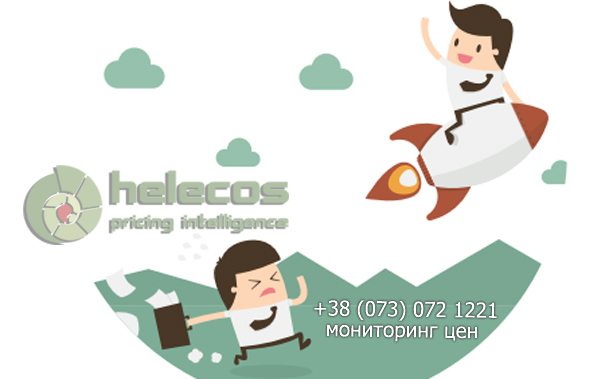
When forming a competitive price on the basis of monitoring analysis, there are a number of factors that must be taken into account:
- The age of the company and/or the place in the ranking - the bigger it is, the higher the reputation of the company, the higher the price can be set for a product item.
- Season. Many products are tied to a certain season, so a fur coat in summer should definitely cost cheaper than in the fall and winter.
- The number of competitors. In the formation of the price tag analysis should be conducted as a global and local competitors.
- Take into account the weaknesses and strengths of your product. You should understand what you can make a markup for and at what expense you can make a promotion for the product.
At the same time the competitive price can ignore temporary promotions and discounts of competitors, discount programs, wholesale purchase conditions and some other points.
How do I identify competitors? Methods for obtaining a list of competitors
Types of competitors:
- Weak competitors are not a threat. This is an opportunity to expand your customer base by switching consumers to your product line.
- Strong - companies that pose a potential threat. Your marketing strategy in this sparring should focus on increasing your customer loyalty to your own service!
Correctly identifying your competitors is a recipe for an effective pricing strategy
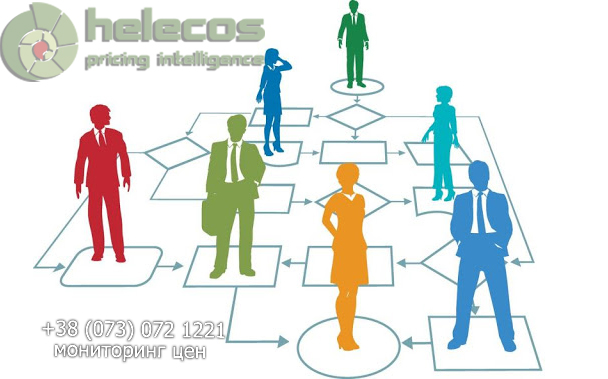
The main questions to guide your search are:
- Do your products or services belong in the same category as items in the selected competitor's catalog?
- Can the competitor's products solve the same problems as your products?
- Can your customers go to a prospective competitor's site when searching for a solution to their needs.
If all questions are answered positively, the company in question is definitely your competitor!
Search Tools:
- Search Engine - Evaluate which sites come up next to you for subject queries.
- Phone - survey your customers, check with your sales managers.
- Subject ratings - the simplest, but subjective tool for identifying market leaders.
- Forums - visit industry "chat rooms", ask where it is better to buy a certain product from your catalog.
When you get a list of competitors, you will be able to conduct a substantive analysis and give an objective assessment of each representative of the market. This is the first thing you need to do to form an effective strategy for your product or service.
A detailed and reliable competitor analysis is a long and time consuming process. With Helecos you have the opportunity to speed up your analyses a hundredfold and to guarantee the most updated information on your competitors' prices, product offers and promotions.
The key competitors are those who can affect your store dramatically and lure your customers. Analyzing their behavior and controlling prices is vital to your business in the first place!
Four ways to identify your site's competitors
- Search engine output. We are talking about sites that are shown first when you enter a key query about a product in a search engine.
- Search engine operators. Here it is important to specify a clear search parameters using special characters. Template for such a query is related:*Your domain. The result of such operation will be a page with the first ten nearest to you competitors.
- Use of price-aggregators. Such sites have many offers for the same product in one place. You enter its name in the search and get all its variations in price from different stores. The most famous platform of this type in Ukraine is Hotline.
- The use of SEO-services. Identify competitors here can be based on the similarity of the search query. In addition to identifying competing stores, such services can provide information:
- the level of configuration and the principles of the competitor's contextual company;
- the traffic of the analyzed resource;
- key phrases that users use to enter the site;
- what product or content interests the buyer more (behavioral activity on the resource).
After getting a list of competitors, the next step is their substantive analysis. Competent conclusions and decisions will allow you:
- Sell the product at the maximum competitive price without loss of profit.
- Monitor the behavior of competitors and track their action on sales as quickly as possible.
- form and timely adapt your price positioning in the market, relative to competitors.
- Identify product categories that are most sensitive to dumping and refine them.
Fully automated monitoring of competing stores, with a total control of their pricing behavior, is possible with the Helecos service. All you need to do is to define the list of your competitors, upload your parameters to the site and receive automatic notifications of changes.
Monitoring studies are the basis that you need first of all during the planning of your marketing strategy and at the stage of pricing your products.
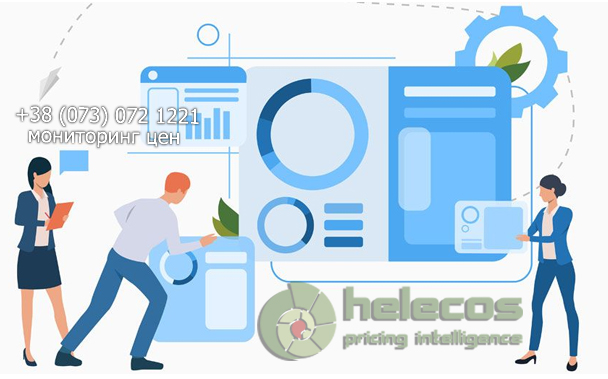
Competitive pricing. About competitors and the purpose of their monitoring
Adding new products to the catalog with maximum efficiency, correctly positioning your product, finding and approving your pricing strategy, and automatically tracking dumping are just some of the tasks solved by monitoring competing stores.
Before you start parsing, you should properly divide your competitors:
| Direct competitors | Indirect competitors |
| The product is in the same price segment, typical CA, functionality and purpose of the product are as similar as possible, promotion and sales through the same channels) | Product/service is fundamentally different, channels do not overlap when the target audience is similar. |
Competitive advantage for you is the result of a competent analysis of your competitors.
"Market leaders and newcomers, separate them" is the first rule at the beginning of the research. It is the former that picks up most of the lost newcomer customers (75%+). Identifying market leaders is simple:
- Use search engine results. To do this, identify a few key queries directly related to your products.
- Social media.
- By communicating with customers of your store.
- By attending themed events (exhibitions, conferences, etc.).
Once you have a list of your main competitors, you can start monitoring.
Detecting dumping and other violations in automatic mode is the most precise recipe for competitive pricing!
Continuous growth in this case is primarily due to the speed of automatic parsers:
- There is an opportunity to push the vendor through the vendor.
- The price tag on your site is adjusted as quickly as possible to the given trends, so as not to lose your customers (until the situation is figured out).
- The information is always up-to-date, as the reports arrive in the mail instantly after being read from other resources.
Regular analysis of competitors' price offers is the key to successful market competition for you! We are talking about specialized online sites that collect data about your products on other sites automatically. You only need to choose the frequency of this process.
The price of the product/service is the main factor of competition! Hence, there is such a concept as "Competitive Price". This is the cost, which is formed under the influence of supply and demand in the market and has an optimal value for the consumer.

Competitive pricing - the main pricing factors
- Objective - include the costs of producing products. In addition, the factors in this group take into account:
- the quality of the product;
- The correlation of supply and demand in the market;
- The state of the monetary sphere in the chosen market segment.
-
Subjective - are based on such moments as the price legislation, the relationship of the seller and the buyer, payment terms, the volume of purchases and others.
What if the competitors reduce the prices? The main methods of struggle with the initiators of dumping
The first thing to do is to identify such violations in a timely manner. And the faster this will be done, the faster your sales will go up. At this stage an automatic service to monitor your competitors comes in handy.
Increase the price tag!
It's true that the number of orders will decrease, but the actual profit will increase and you will definitely stay in the black! See the table:
| Purchase price | Markup | Retail | Value | Merchandise | Profit | Total profit |
| 1000 | 30 | 1300 | 300 | 50 | 65000 | 15000 |
| 1000 | 50 | 1500 | 500 | 40 | 60000 | 20000 |
| 1000 | 70 | 1700 | 700 | 30 | 51000 | 21000 |
Agree with your supplier to jointly control prices within the market
The interest of keeping a competitive price for the manufacturer in the following chain: the store lowers the price tag, works in the negative, goes broke and closes. The dealer "fell off" - the number of deliveries decreased.
There can be several solutions to this issue:
- Denial of service to the offending store;
- Raising the purchase price, proportional to the ratio of the price tag in the marketplace to the RRP.
"The customer will always look where he can buy cheaper" - without this law, the definition of competitive pricing would lose weight.
Helecos is a professional, feature-rich program designed to monitor competitors' prices, identify dumping, track competitors' promotions and discounts, etc. To get access to a probation period or to have a consultation about the system, please call +38(073)072-1221.
Price is the main factor that determines the competitiveness of the business. That's why initially correctly set price is the main point on the way to leadership in the chosen field.
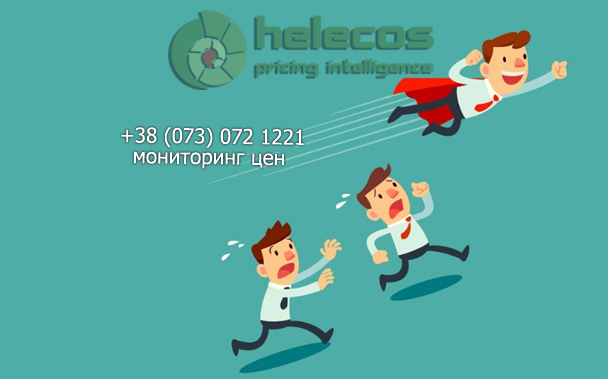
Competitive analysis without additional services
The main thing: in order to get a complete picture of the market it is necessary to collect information on its key players. This can be done by:
- Consumer surveys - both quantitative and qualitative collection of opinions is suitable. It is important to survey different target groups in doing so.
- Surveys of managers. If the question is properly phrased, you can get information about competitors' special programs and other important information.
- Analysis of industry surveys. Financial statistics are often posted here, and store ratings and characteristics are publicly available.
- Thematic exhibitions. This way you can get information about market participants and necessary contacts.
Features of automated competitive analysis online
Competently organized system of competitor price policy monitoring is based on 3 tasks:
- Gathering information about prices on competing resources.
- Processing and ordering of the received information.
- Visualizing data and making substantive decisions.
The first step is to determine the source of the information. There are not many variants:
- Price aggregators - free platforms for collecting price data from competitors' sites. However, the use of this kind of sites is accompanied by a number of negative aspects:
- Low informativeness of the analysis. You can assess only those data which are uploaded to the site in a digital format (without stocks, discounts, etc.).
- Outdated prices. The information on the aggregators is updated according to the rules of the service and there is no guarantee that you are offered relevant information.
- A block of some requests. This is a frequent phenomenon when using sites for competitive analysis without API.
- Automated collection directly from the sites of online stores - the source of the most relevant information, the fastest and most accurate! All you need to do is upload your product line to the service, choose your competitors whose price you want to track and wait for notifications of violations!
Helecos is a system of automatic competitive analysis, which completely eliminates time and labor costs for studying your competitors.
How often should you monitor competitors' prices?
The main factors determining this point are:
- The volume of the company and the assortment. The number of product subgroups and positions in each of them should also be taken into account.
- The size of the entire market in which there is a struggle for leadership (the number of competing online stores). Whether you work on the city, regional or federal market is important for the automation of monitoring.
- Specifics of work. The type of goods and/or services being worked with is meant here. For instance, if the cost of the goods directly depends on the currency exchange rate, the monitoring automation is especially important in the daily mode or in the period of rates' change.
If we are talking about the giant companies or leaders in their industries, then automated monitoring should be conducted every day, or even several times, in order to quickly and timely adjust their price proposals and stay in the top!
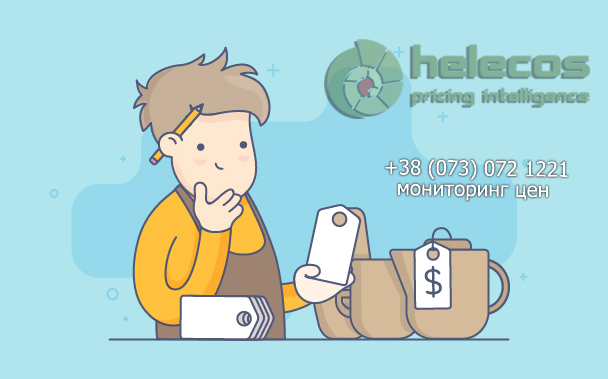
Is your company a small or medium-sized business with dozens of products? - The optimal frequency of competitor analysis would be once every few days.
The key rule here is: "The smaller the coverage a business has, the less often you can monitor pricing policy in the market.
The main problems of automated price monitoring. How to choose the "right" service for analysis?
Of course, you can save money and buy a package from a student or a low-skilled programmer to use such service, but what are the consequences?
The complexities that the software in question must take into account:
- Sites that openly provide their price lists for services rendered and goods sold may have protection against automated parsing. In this case, such resources either close access to the information completely or substitute it in such a way that the collected data eventually turns out to be irrelevant.
- Obtaining incomplete information. There are also such services, which are focused only on the price tag of the product and do not take into account additional conditions of purchase, which are key for the user. Among them are delivery terms, warranty terms, promotions/discounts, and much more.
Automation of website monitoring by your competitor should be organized at a high level. Then you will get the right information about the market and will be able to make a logical decision on forming your strategy.
What are the tools for price monitoring?
The price list is the most important factor that determines competitiveness! A competitive price list is the key to successful business.
Price monitoring tools. Choice variation and criticism
There are dozens of different price intelligence tools on the market. When choosing the most effective one you should pay attention to the following features:
- Functionality.
- Usability - the convenience of the interface for the new user, the proper location of the service elements, etc.
- Price. It is important to pay attention not only to the price tag for using the service, but also to the availability of a trial period to test the tool.
- Accuracy. This point largely depends on the speed of the program. It should not exceed 2%!
- A wide range of work. For instance, there are tools that work only with some of the selling resources. For example, Repricer can analyze only sellers on Amazon.
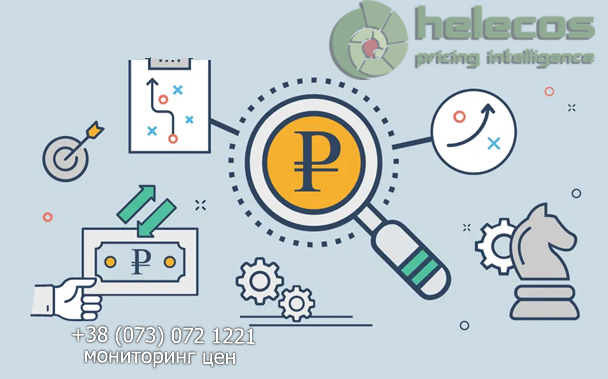
Some monitoring tools with a brief descriptive map:
- Date Crops - India 2004. There is no way to try the service before you buy, and there are limitations on the amount of information you can retrieve.
- Omnia Dynamic Prising. Yes, here is created the most flexible model for setting up the monitoring process, there is a demo version. At the same time, the price of the full version of the program is too high for a small company.
- Skoodle. With standard functionality, there are complaints about the support service (they answer only during working hours), as well as the price of the tool.
- Mindrest. With multi-channel and ongoing customer support, there is no free period and there is a restriction on collecting prices from sellers without registration.
- Price Too Spy. With a web app and the ability to access from Android and the IOS platform, the tool does not update price information in a timely manner - there is a synchronization problem. In addition, the usability of the service leaves much to be desired.
Helecos is an updated multifunctional price monitoring tool with 24/7 access, a free trial version, a user-friendly design and automatic alerts on violations.

Add new comment